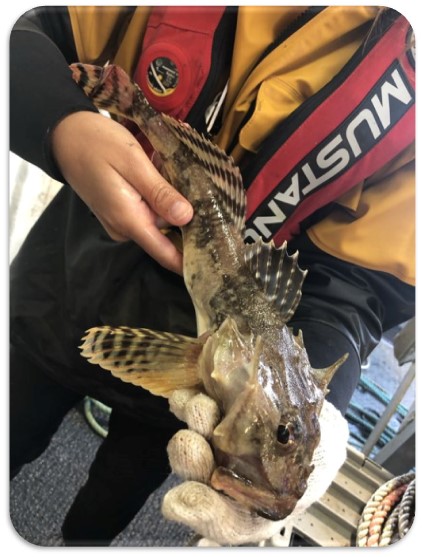Characterizing By-catch
By-catch, the unintentional and unmanaged harvest of non-target species in a fishery, is a significant source of concern for all stakeholders in fisheries management and ocean conservation. Incidental harvest is cited as contributing toward excessive mortality and/or stock decline in countless species worldwide, and in some cases threatens the stability of entire ecosystems. Globally, it is estimated that by-catch constitutes a minimum of 40.4% of all commercial landings by weight. In Canadian fisheries, the proportion of by-catch by weight is 8.1%, with lobster and crab fisheries responsible for 30.9% of this (25,000/81,000 tonnes). Collecting by-catch data can give a picture of species richness and diversity in a fishery’s area of operation, clarify which species are being impacted most severely, and illuminate overlap between the habitat of the target species and that of threatened or endangered by-catch. DFO has recently introduced a by-catch monitoring program to some Maritime lobster fisheries (including LFAs 33 and 34), which sees at-sea monitors (either from DFO or another approved organization) accompany fishers on their boats to record data for various species of interest including Jonah crabs, Rock crabs, Atlantic Cod, and Cusk. This program has been controversial among many fishers, and has led to the creation of industry-led science initiatives/associations, motivated by the fishers’ desire to fulfill DFO’s requirements under their own guidance and framework rather than needing to notify and accommodate federally appointed observers. Given that Nova Scotian lobster landings are expected to continue to increase, it is important to know and characterize the species which are being unintentionally impacted. A collaborative approach to this question which allows fishers to take a lead role and be stewards of their own fishery, as our study does, is more likely to see continued success.
